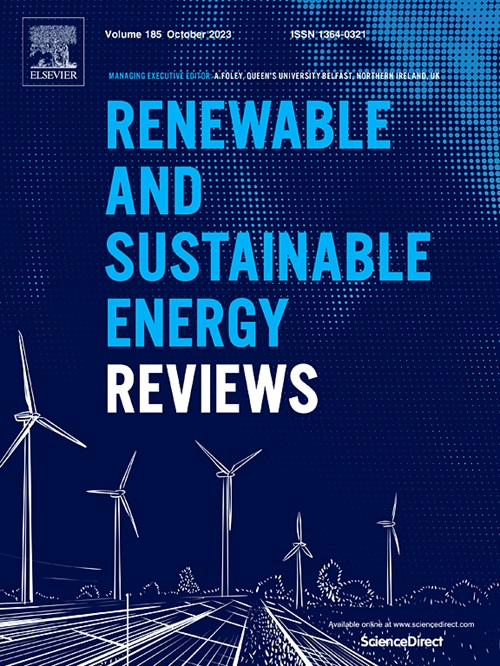Per- and polyfluoroalkyl substances (PFAS) in solar photovoltaic modules
IF 16.3
1区 工程技术
Q1 ENERGY & FUELS
引用次数: 0
Abstract
The presence of Per- and Poly Fluoro Alkyl Substances (PFAS) in solar modules is a growing concern, yet the current literature leaves key questions unanswered: Are PFAS present in solar modules? If yes, what types and quantities are involved, and what risks do they pose? This study attempted to address these gaps through a systematic review of the literature published over the past decade, focusing on five key areas: 1) the occurrence of PFAS in solar modules, 2) quantities in different solar module components, 3) suitable analytical methods for PFAS detection in solar modules, 4) United States Environmental Protection Agency PFAS's regulations and policies, and 5) screening levels and health risk assessments for PFAS in solar modules. Our findings highlight a paucity of data regarding PFAS in solar modules, with most references limited to their use in anti-reflective and self-cleaning coatings on solar glass and as barrier layer in backsheets. The literature provides some context for PFAS application in solar modules; however, information regarding PFAS types, amounts, layer thickness, and host component characteristics is lacking. While some laboratory studies explore hydrophobic PFAS coatings, they appear absent from commercial solar modules. Most PFAS used in solar modules are fluoropolymers, considered a low-risk PFAS subgroup. Currently, no standardized methods exist for PFAS analysis in electronics. Point-based health risk assessment in this work indicates no risk for PFOA, PFNA, PFOS, PFBS, or GenX for solar modules. Advancing quantification techniques for PFAS in solid matrices could enhance analysis capabilities and inform waste characterization strategies for the emerging solar waste stream.
求助全文
约1分钟内获得全文
求助全文
来源期刊

Renewable and Sustainable Energy Reviews
工程技术-能源与燃料
CiteScore
31.20
自引率
5.70%
发文量
1055
审稿时长
62 days
期刊介绍:
The mission of Renewable and Sustainable Energy Reviews is to disseminate the most compelling and pertinent critical insights in renewable and sustainable energy, fostering collaboration among the research community, private sector, and policy and decision makers. The journal aims to exchange challenges, solutions, innovative concepts, and technologies, contributing to sustainable development, the transition to a low-carbon future, and the attainment of emissions targets outlined by the United Nations Framework Convention on Climate Change.
Renewable and Sustainable Energy Reviews publishes a diverse range of content, including review papers, original research, case studies, and analyses of new technologies, all featuring a substantial review component such as critique, comparison, or analysis. Introducing a distinctive paper type, Expert Insights, the journal presents commissioned mini-reviews authored by field leaders, addressing topics of significant interest. Case studies undergo consideration only if they showcase the work's applicability to other regions or contribute valuable insights to the broader field of renewable and sustainable energy. Notably, a bibliographic or literature review lacking critical analysis is deemed unsuitable for publication.
 求助内容:
求助内容: 应助结果提醒方式:
应助结果提醒方式:


